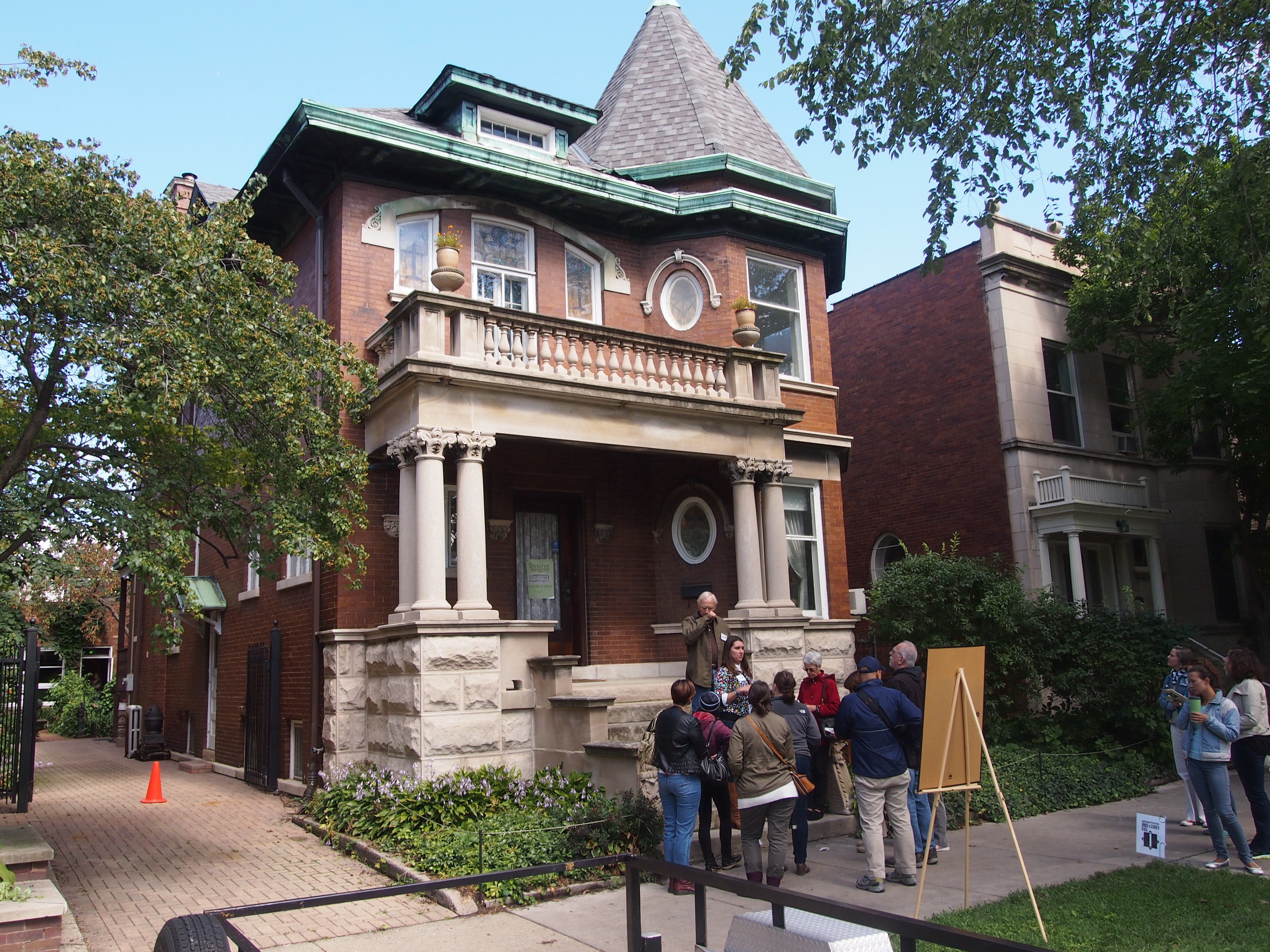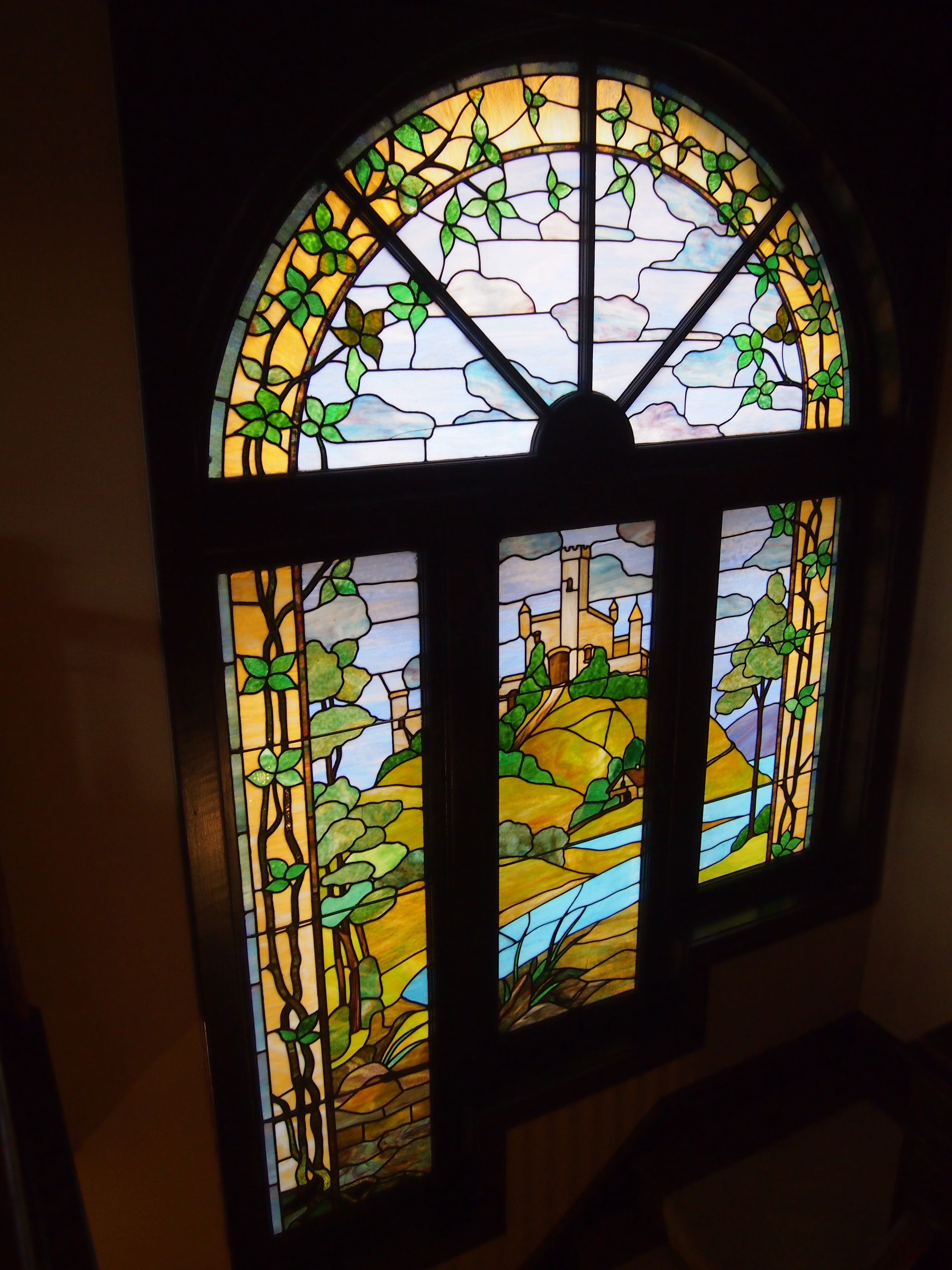The point of a house walk is to go inside and look around while a docent tells you some interesting things about the things you see. They also sketch a short history of the property, and in the case of Chicago houses from the earliest years of the 20th century, the story tends to be: X house was built incorporating Y and Z influences. By the mid-century, later owners updated, modernized, painted over, or otherwise Eisenhowered the earlier charms of property, then the neighborhood went to hell and maybe so did the house. In the last 20 years or so, individuals have been spending a lot of time and money restoring – with some concessions to modernity – X house to close to its original design, because Y and Z influences are damn cool.
One particularly egregious example of Eisenhowering an interior on the Logan Square House & Garden Walk involved rooms trimmed with dark, beautiful woods installed by expert craftsmen in 1912 that have only recently seen the light of day again. Forty or so years after they were installed, they were painted white. All of them. Then re-coated a number of times afterward. Pictures on display showed just how lifeless that made the room.
The walk was well attended. Sometimes we had to wait outside a house while another group filed through.
 Docents inside and out the houses pointed out various architectural details: Prairie School this and that, Victorian flourishes, Chicago-style windows, a couple of oculus ovule windows (oval eye, see above), an assortment of columns, a diversity of balustrades, cornices a-plenty, brick, limestone, beautiful woodwork, ornate electric lamps that used to be gas, wooden floors from species no longer harvested or at least tremendously expensive, walls restored or partly restored, and more.
Docents inside and out the houses pointed out various architectural details: Prairie School this and that, Victorian flourishes, Chicago-style windows, a couple of oculus ovule windows (oval eye, see above), an assortment of columns, a diversity of balustrades, cornices a-plenty, brick, limestone, beautiful woodwork, ornate electric lamps that used to be gas, wooden floors from species no longer harvested or at least tremendously expensive, walls restored or partly restored, and more.
And a surprising amount of stained glass in some of the houses, including the following remarkable example. Then again, Chicago used to be a mecca of stained glass manufacture.
 Some of houses featured collections of stuff that were as interesting (to me) as the architectural details. One homeowner collected train paraphernalia, including a working early 20th-century fare box from a CTA car, plus neon sculpture, old radios, and more.
Some of houses featured collections of stuff that were as interesting (to me) as the architectural details. One homeowner collected train paraphernalia, including a working early 20th-century fare box from a CTA car, plus neon sculpture, old radios, and more.
Another homeowner devoted the walls of a small room to his personal collection of presidential campaign buttons. Each candidate’s buttons were grouped together and under glass in one of those framings that’s a little deeper than a picture frame. All of the presidents since McKinley at least were represented, and so were a number of losing candidates (I saw Willkie, Goldwater, Humphrey and Dole), even a few that didn’t make it past the primaries, such as Nelson Rockefeller.
In another house, one wall sported a panoramic photograph of an enormous group of people in a park-like setting. From the looks of the fashions, about 100 years ago. The docent speculated that it was a company outing or picnic or the like in Humboldt Park, since it looks to be summer. But she said that no one was certain. Nothing was written on the print. I could have stared at the thing a good deal longer, taking in face after face – and there was quite a variety, young and old, male and female. Men in hats, women in long skirts. Who were they? What was important enough about the occasion to take a panoramic picture, but not important enough to record anything about it on the print?
In yet another house, the man who had owned the place from the 1930s to the 1980s had apparently walled up a number of things in the basement, including gold coins, gold certificates, postcards, and publicity shots of movie stars from (by the looks of them) the ’20s – no one I recognized, since fame is fleeting.
Maybe he thought G-men were going to come looking for his gold, though by the mid-1970s, gold ownership was lawful again. According to the docent, the current owners of the house sold the gold coins and the proceeds went to further the renovation. Some of the postcards and publicity images were on a table for us to look at, and the docent showed us a $10 gold certificate from the trove. It was a small note, clearly Series of 1928, making it one of the more common gold certificates. It was a fairly well circulated note, so not particularly valuable, though worth a good deal more than $10.